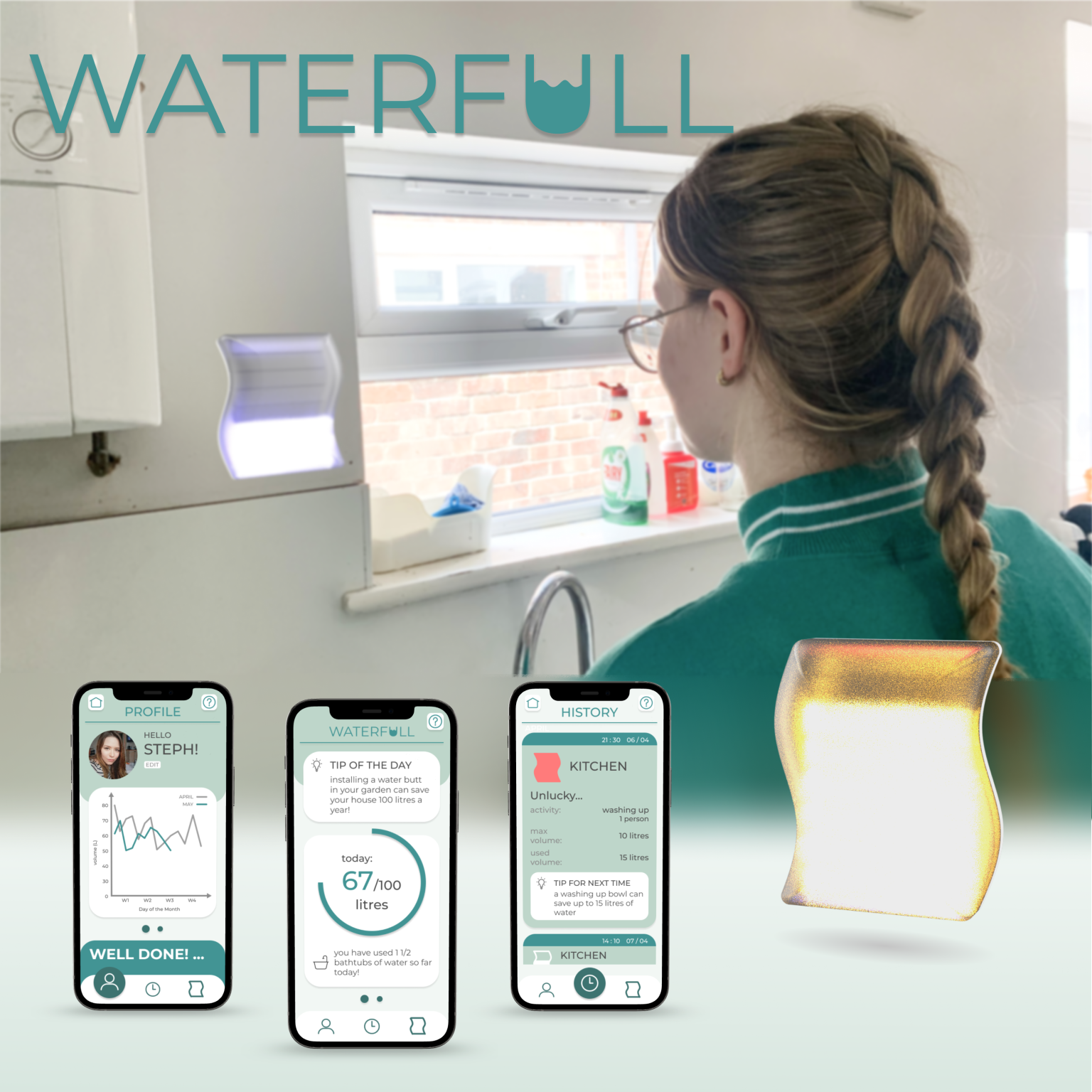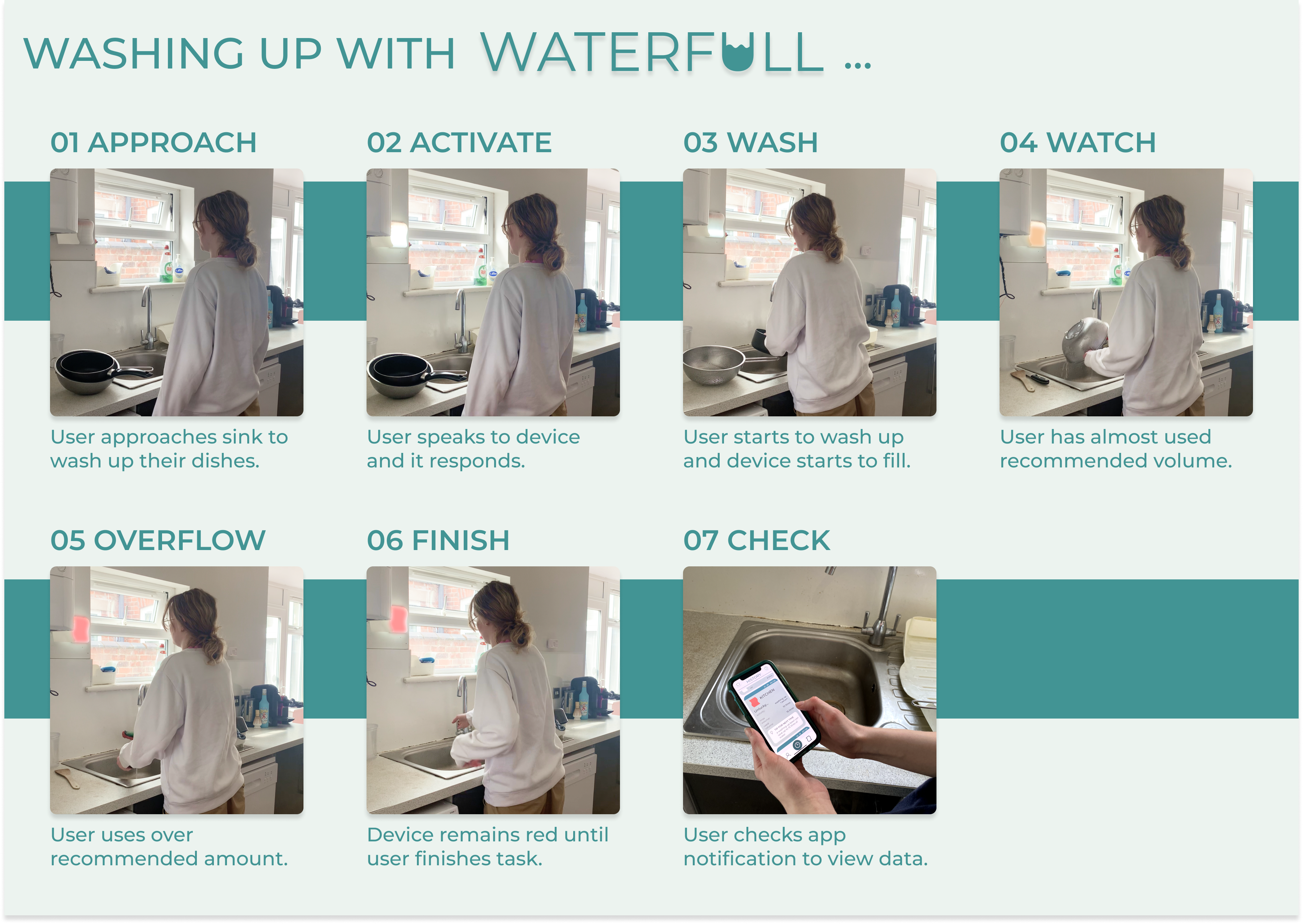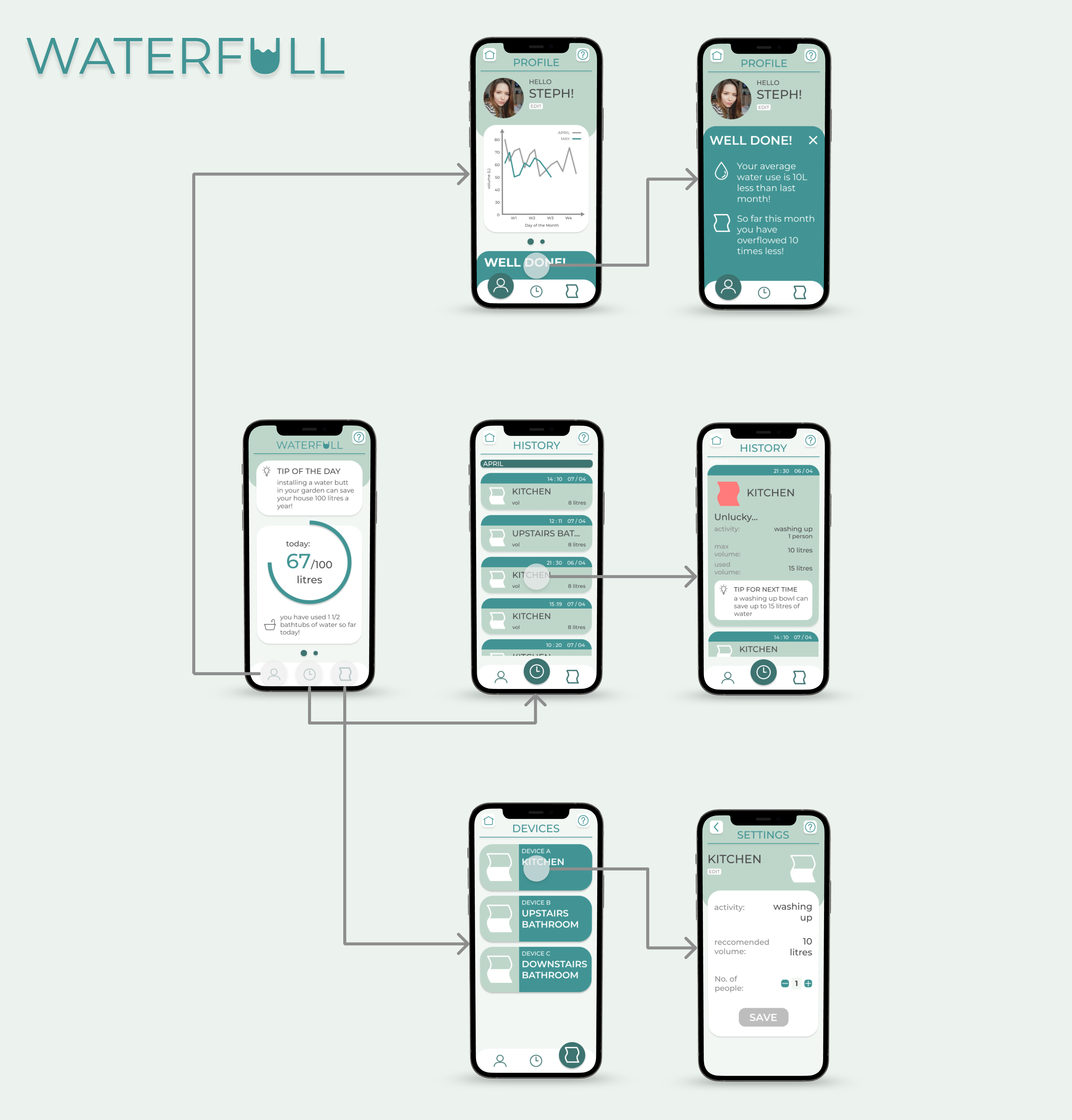Hi I'm Laura, I am a user-centred designer specialising in research and user experience design.
Final year project
Waterfull, improving our everyday water use.
Waterfull
Just 2.5% of the water on the Earth’s surface is considered freshwater. Our growing population is only increasing the demand for this resource.
The average person in the U.K uses between 129-159 litres of water a day. With no way to quantify the volume of water you use, users have developed wasteful habits. Reducing household water waste by making users aware of their behaviour is crucial to conservation.
Waterfull is a smart home monitoring system. Comprising of a LED dynamic device, mounted on your walls next to water sources. Communicating the user’s consumption volume during a task using light. A paddle-wheel flowmeter, measuring volume used. And a mobile application, to organise and present users with their consumption habits and suggest methods of improvement.
Waterfull in use
The aim of Waterfull is to alert you of your water consumption without causing frustration or disruption to your day to day life. Using voice recognition, users are able to activate the device before they start a task.
During the task, Waterfull will "fill up" showing you the volume of water being consumed, reminding users of running taps or showers.
After completing your task, consumption data is sent to the mobile app to help users track their water use over time and provide specific tips to help them improve.
Waterfull mobile app
To aid the dynamic, wall-mounted device the Waterfull app was developed to store and track users' consumption. A key element of creating a behaviour change in users is the ability to view past statistics and visually track improvement. The app aims to nudge users with notifications to view their water usage habits and help guide them into more sustainable methods.
Laura Anderson
Final year project
Waterfull, improving our everyday water use.
Work Experience
During my placement year, I took on the role of the User Experience Design Intern at Zebra Technologies. My role consisted of supporting the Zebra UX team in developing, creating and releasing appropriate software solutions that improve user experiences in medical, retail and domestic industries. Over this time I greatly improved my ability to work with and lead small teams through a design sprint, liaising with a variety of stakeholders such as software developers, designers and customers.
As well as developing my user experience research and user interface design abilities I began to learn basic HTML and CSS coding to improve my understanding of app implementation.


